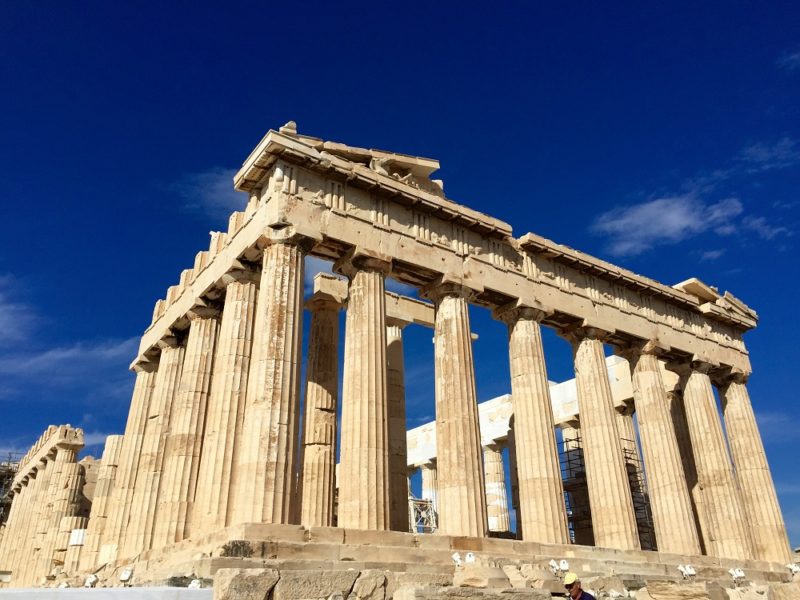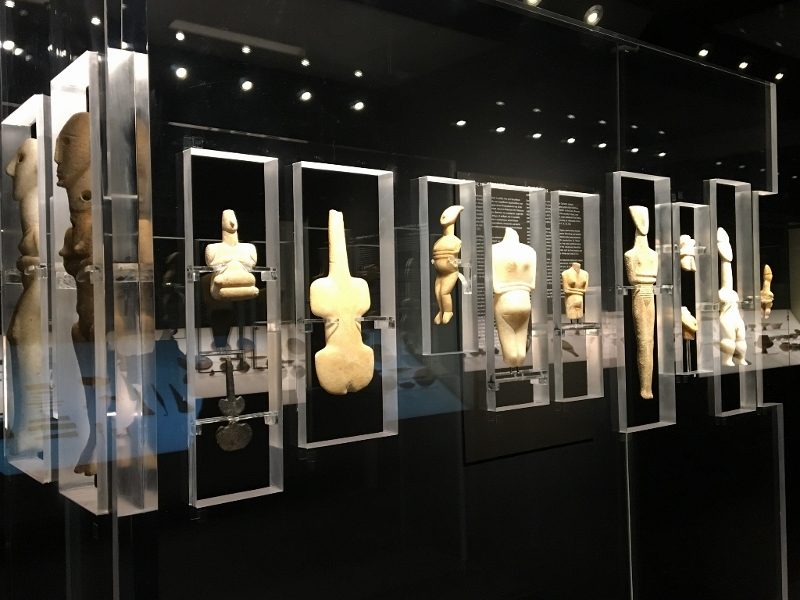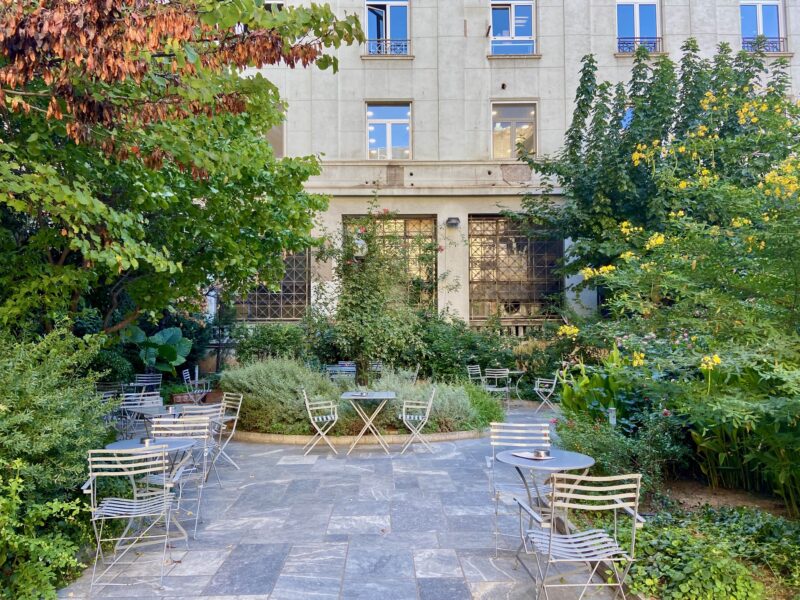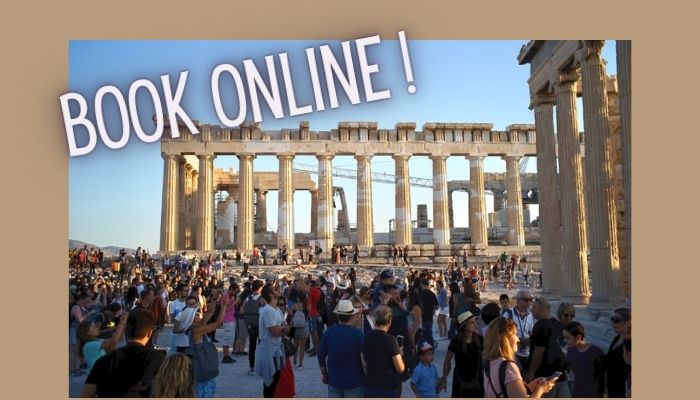Greece’s long and rich history has enamelled its entire territory with many treasures. To date, UNESCO has inscribed 18 cultural or natural heritage sites, protecting 20 exceptional sites in Greece. Whatever you choose to do on your trip to this beautiful country, don’t miss out on these marvels! Discover the 20 UNESCO World Heritage sites in Greece.
Athens and surrounding area: 2 UNESCO World Heritage sites
The Acropolis of Athens
A true symbol of Greek civilization, the Acropolis of Athens has been a UNESCO World Heritage site since 1987. Its extraordinary architectural ensemble includes the Parthenon, the Erechtheion, the Propylaea, the Temple of Athena Nike, the Theater of Dionysus and the Herod Atticus Odeon. The monuments of the Acropolis in Athens were designed in the 5th century BC. under the initiative of the Athenian statesman Pericles. The famous sculptor Phidias directed their creation.
Daphni Monastery
The monastery of Daphni in Attica was declared a World Heritage Site in 1990, along with the monasteries of Hosios Loukas near Delphi and Nea Moni on the island of Chios.
Although geographically distant, these three monasteries are part of a single series with common architectural features. In fact, all three monasteries feature magnificent marble decorations and mosaics with gold backgrounds.
In 1999, however, an earthquake damaged the Daphni monastery. After lengthy restoration work, it is once again open to the public.

Peloponnese: 5 UNESCO World Heritage sites
The sanctuary of Asclepius at Epidaurus
The sanctuary of Asclepius in Argolid is part of the famous archaeological site of Epidaurus, dedicated to the cult of the god of medicine in the 4th century BC.
Epidaurus has been a UNESCO World Heritage Site since 1988. Its main monuments date from the 4th century BC:
- Temple of Asclepius;
- tholos (burial) ;
- the theater of Epidaurus, considered one of the purest architectural masterpieces of Greek antiquity.
This collection devoted to the healing gods offers a valuable insight into the therapeutic cults of Greece. What’s more, the road to get there is superb and the site boasts a breathtaking natural setting!

Mystras website
The archaeological site of Mystras, the “wonder of the Morea”, has been a UNESCO World Heritage Site since 1989. The medieval town was built in 1249 around the fortress erected by Guillaume de Villehardouin, Prince of Achaia.
Reconquered by the Byzantines, then occupied by the Turks and Venetians, it was finally abandoned in 1832. Today, visiting the medieval ruins of Mystras in their splendid natural setting remains an exceptional experience.
The sites of Mycenae and Tirynthe
The archaeological sites of Mycenae and Tirynthe in Argolid are the remains of the two most important cities of the Mycenaean civilization. This civilization dominated the eastern Mediterranean from the 15th to the 12th century BC.
The jointly listed sites of Mycenae and Tirynthe have also been classified by UNESCO since 1999. A visit to Mycenae also means crossing two sites closely linked to Homer’s epics , the Iliad and the Odyssey. Our guide to Mycenae.
The archaeological site of Olympia
Olympia, on the banks of the Alpheios River, was dedicated to the cult of Zeus as early as the 10th century BC. The Altis sanctuary housed an impressive concentration of masterpieces from the ancient world.
The archaeological site of Olympia has also been a UNESCO World Heritage Site since 1989. Here you’ll find the remains of the sports facilities used for the Olympic Games, held here every 4 years from 776 BC. You can also discover the history of the Olympic Games at the Athens Olympic Museum.
Temple of Apollo Epikourios at Bassae
The Temple of Apollo Epikourios is located in Bassae, in the Acadian mountains of central Peloponnese. It has been a UNESCO World Heritage Site since 1986.
This columned temple dedicated to the god of healing and the sun dates from the mid-5th century BC. The capital of the axis column is the oldest surviving Corinthian capital. The temple’s architecture, a blend of archaism and Doric style, represents a remarkable artistic achievement.
Central Greece: 2 UNESCO World Heritage sites
The site of Delphi
The oracle of Apollo spoke from the Panhellenic sanctuary of Delphi, the spiritual center of the Greek world. Located at the foot of Mount Parnassus, the site of Delphi has been considered a symbol of Greek cultural unity since the 8th century BC.
The archeological site of Delphi has been a UNESCO World Heritage Site since 1987, and includes the Temple of Apollo, an ancient theater, a stadium, the sacred road leading to the Athenian treasury and the omphalos… It’s a must-see when visiting Greece.
The monastery of Hosios Loukas
This monastery of Hosios Loukas, near Delphi, isone of the most beautiful Byzantine monasteries in Greece. The beauty of its gold-backed frescoes and refined ornamentation in jasper, porphyry and marble are what make it so famous.
The monastery of Hosios Loukas was listed as a UNESCO World Heritage Site in 1990, along with the monasteries of Daphni and Nea Moni.

Macedonia: 4 UNESCO sites
Early Christian and Byzantine monuments in Thessaloniki
The port city of Thessaloniki, founded in 315 B.C., was one of the earliest centers of the spread of Christianity. Its early Christian monuments offer fine examples of churches built on central, basilical or intermediate plans.
Built between the 4th and 15th centuries, Thessaloniki ‘s early Christian and Byzantine monuments also had a considerable influence on the Byzantine Empire. They have been listed by UNESCO since 1988. See the list of Thessaloniki’s Unesco World Heritage monuments.
The archaeological site of Aigai (Vergina)
The ancient city of Aigai was discovered in the 19th century near Vergina in northern Greece. This is the first capital of the Macedonian kingdom, it boasted a monumental palace decorated with mosaics and painted stucco, the remains of which you can visit. The cemetery contains over 300 tumuli, including the tombs of the Macedonian royal family. One of these is the tomb of King Philip II of Macedonia, father of Alexander the Great. The museum also exhibits gold objects and jewels, armor and vases, as well as the marble entrance doors to royal tombs. Wonderful!
The archaeological site of Aigai has been a UNESCO World Heritage Site since 1996. It’s a must-see if you’re visiting Northern Greece.

The archaeological site of Philippi
The remains of this fortified town are located on the Via Egnatia, in present-day eastern Macedonia. Founded in 356 BC by King Philip II of Macedonia, the city developed as a “little Rome”. Following the visit of the apostle Paul in 49-50 CE, it also became a center of the Christian faith.
The archaeological site of Philippi has been a UNESCO World Heritage Site since 2016. It includes an ancient theater, an acropolis and a forum.
To visit this site, please visit the official Odysseus Culture website.
Mount Athos
Mount Athos, or the “Holy Mountain”, lies at the southeastern tip of the Chalkidiki peninsula in Macedonia. Its isolated monasteries and painting school bear witness to its importance in Orthodox spirituality since 1054.
Home to some 1,400 monks, the site is also off-limits to women and children. Mount Athos has been a UNESCO cultural and natural heritage site since 1988.
Thessaly: Meteora, the only UNESCO site of its kind
The fabulous Meteora site in Thessaly has been a UNESCO cultural and natural heritage site since 1988. Indeed, the landscape, made up of monumental sandstone peaks topped by monasteries, provides an impressive backdrop that seems almost inaccessible. In the 11th century, anchorite monks settled in this isolated and unusual landscape. Three centuries later, there are a total of 24 monasteries, built in difficult conditions. Their frescoes also mark a turning point in the history of post-Byzantine painting. Today, monks and nuns still live in 6 of these monasteries. They are all open to the public and have their own special features, making this magnificent site an unforgettable visit to Thessaly.
All the practical information you need to visit Meteora

The Greek islands: 6 UNESCO sites
The island of Delos
At the heart of the Cyclades archipelago, the sacred island of Delos is the birthplace of Apollo and Artemis according to Greek mythology. Now uninhabited, the island is home to a vast archaeological site, including the sanctuary of Apollo, the Terrace of the Marble Lions, an ancient theater, temples and the remains of a trading port…
The island of Delos was declared a UNESCO World Heritage Site in 1990.
The historic center of Chora on Patmos
This ancient colony of Chora, on the island of Patmos, includes numerous religious and secular buildings. The small island in the Dodecanese archipelago is said to be the place where Saint John the Theologian (Agios Ioannis Theologos) wrote his Gospel and the Apocalypse, more precisely in the Cave of the Apocalypse. A monastery within a fortified enclosure was founded at the end of the 10th century. Since then, it has been an Orthodox pilgrimage site.
The historic center of Chora on the island of Patmos has been a UNESCO World Heritage Site since 1999, thanks to the Monastery of St. John the Theologian and the Cave of the Apocalypse.
Our advice and practical information on where to stay and how to get to Patmos.

The medieval town of Rhodes
Also in the Dodecanese, the medieval town of Rhodes has been a UNESCO World Heritage Site since 1988. From 1309 to 1523, it was first occupied by the Hospitaller Order of Saint John of Jerusalem. It then came under successive Turkish and Italian domination.
The Upper Town of Rhodes is a remarkable urban ensemble from the Gothic period. As for the lower town, it boasts an astonishing mix of Gothic architecture and buildings constructed during the Ottoman period.
To prepare your stay in Rhodes, we tell you everything in our article Practical advice in Rhodes.
Nea Moni Monastery in Chios
The monastery of Nea Moni is located on the island of Chios in the Aegean Sea. It has been a UNESCO World Heritage Site since 1990, along with the monasteries of Daphni and Hosios Loukas, whose architectural features it shares.
Pythagoreion and the Samos Heraion
The small Aegean island of Samos has seen a succession of civilizations since the 3rd century AD. Today, the remains of the ancient fortified port city of Pythagoreion and the sanctuary of Hera (Heraion) bear witness to this rich past.
The two Samos sites have also been UNESCO World Heritage Sites since 1992.

Corfu’s old town
Corfu is a fortified port city located in the Ionian Islands, off the western coasts of Albania and Greece, at the entrance to the Adriatic Sea. Its Venetian history began in the 8th century B.C. The city’s three forts were designed by Venetian engineers to protect the Republic of Venice’s commercial interests against the Ottoman Empire. Even today, the city’s The beauty and authenticity of Corfu’s old town bear witness to this Venetian period and those that followed. So be sure to visit one of Greece’s most beautiful cities! We can help you plan your vacation in Corfu?
In addition to these 20 outstanding sites, 14 others are currently on UNESCO’s Tentative List, awaiting future inclusion on the World Heritage List.
In short, with this list, you won’t be short of ideas for your next vacation in Greece!
Sandra B.




